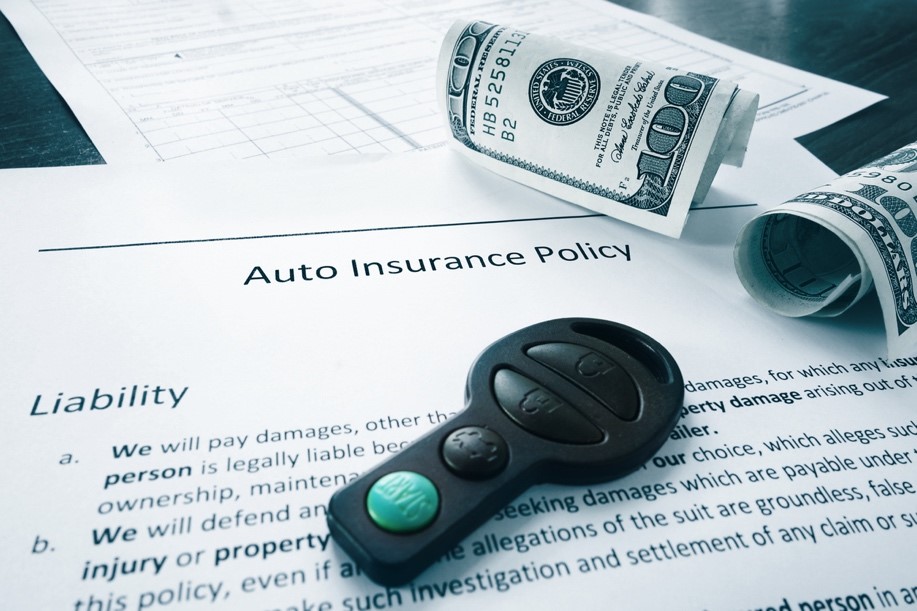Understanding the basics helps you decide if you need something more comprehensive
Auto coverage is essentially no different from any other kind of insurance. The more you have, the more protected you are and, of course, you get what you pay for. It’s important to remember there’s no catch-all policy out there. Not only will the fine print differs from vehicle to vehicle and person to person, your policy may even shift its coverage based on changes in your life.
To fully understand what’s covered under auto insurance, consumers must be aware of the essential types available. With this knowledge, they’re better able to appraise the policies on offer and build personal coverage which suits their lifestyle, their vehicle, and their budget.
Basic auto insurance coverage
There are policy minimums no driver can afford to be without. These vary from state to state. In New York, for example, a basic auto insurance policy must carry a minimum of:
- $10,000 for property damage for a single accident
- $25,000 for bodily injury and $50,000 for death for a person involved in an accident
- $50,000 for bodily injury and $100,000 for death for two or more people in an accident
If you’re wondering who is covered by your auto insurance, the policy extends the same protection to your family members when they drive your car, or if someone else should do so with your permission. Be aware: if you allow an unlicensed or intoxicated individual to drive your vehicle, however, you can be held liable and sued for any damages they cause.
These are vital bases to have covered with your auto insurance, but they’re by no means all you may want to protect yourself from.
The more detailed policies and what they cover
Nobody wants to pay more than they must; especially not for ongoing expenses like insurance. However, it can benefit policyholders, in the long run, to distinguish between what’s cheap and what’s really affordable. If you can manage a little more on your monthly premium costs, you may save a huge amount down the road.
To be covered beyond the basics, consider:
- TPFT (Third Party Fire and Theft) – Since it’s not required by law, many drivers don’t carry it. If that’s not a chance you’re willing to take, this policy will cover extra things your basic policy won’t. Fire damage and theft are provided for, but only successful If a thief damages your car and doesn’t steal it (or breaks in and takes personal property from the vehicle’s interior) TPFT won’t cover these two instances.
- Collision insurance – Did you notice that none of the policies we’ve mentioned so far actually cover damage to your vehicle? This is where collision insurance comes in. It provides for repairs if you hit another driver or object, or incur damage through poorly-maintained roads.
- Comprehensive insurance – This also covers fire and theft but as the name suggests, it also covers things like vandalism, weather damage such as hail and floods, animal collision, and exterior objects falling on your vehicle. Coverage for full glass breakage can also be packaged in this as well.
- Uninsured/Underinsured Motorist coverage – The most recent data from the Insurance Research Council says one in eight drivers don’t carry auto insurance. Florida was the worst offender with roughly 26.7% of drivers breaking the law. Fortunately, that number is only about 6.1% in New York. If you carry uninsured motorist coverage, you’ll be covered if you or your vehicle are damaged by one of these people or by a driver from another state with lower minimums than required in New York.
- Medical Payments coverage – The exact nature of how medical bills are paid after an accident isn’t clearly understood by every driver. Taking out medical payments coverage provides additional protection, but make sure you know how much your health insurance already covers. If you feel it’s sufficient in the event of an accident, then you may not require medical payments coverage.
Some super-safe auto insurance options
Careful driving isn’t always enough to protect your windshield and windows: weather, temperature changes, unseen road debris and improper installation can all contribute to costly cracks. Your current policy may not have your auto glass covered, so purchasing supplemental coverage may be necessary. Some states require insurance companies to cover windshield damage for comprehensive policy holders with no deductible, however, as it’s a safety issue.
Think about rental car reimbursement to really be ready for road trouble. This add-on will supply you with a secondary vehicle while your own is being repaired for covered damages.
Gap insurance is another form of coverage which often slips under consumers’ radar. It addresses the financial disparity between what you paid for your vehicle originally and what the market says it’s worth now or the difference from your lease liability. If your vehicle is stolen or totaled and has depreciated in price since purchase (and they all do, with the exception of collectible cars) then there may be a gap between what your policy will pay and how much you owe on the vehicle. Gap insurance is there to make up that shortfall.
An important takeaway
If you’re using your vehicle for anything other than personal trips or driving to work, your usual auto insurance won’t cover you. Professional usage such as deliveries or transporting passengers for profit (Uber, for example) will require its own type of auto insurance. If you’re an employer or employee, you’ll need the coverage provided by a commercial auto insurance policy.
There are a lot of options to explore. For real peace of mind, we recommend reaching out to an insurance professional. A little time spent with a qualified professional not only means finding the best deal on your auto insurance – but also the kind of plan which suits you as an individual.
Give NICRIS Insurance Agency a call at 516-544-0006 or just send us a message through our online contact form.

